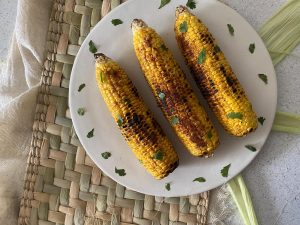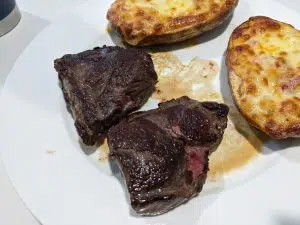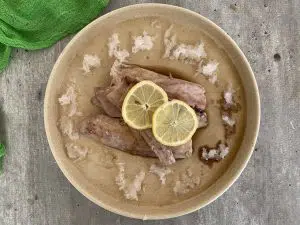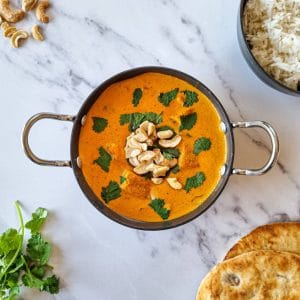Bulgarian Lukanka Salami
Important Note: When you buy through our links, we may earn a commission. As an Amazon Associate we earn from qualifying purchases. Content, pricing, offers and availability are subject to change at any time - more info.
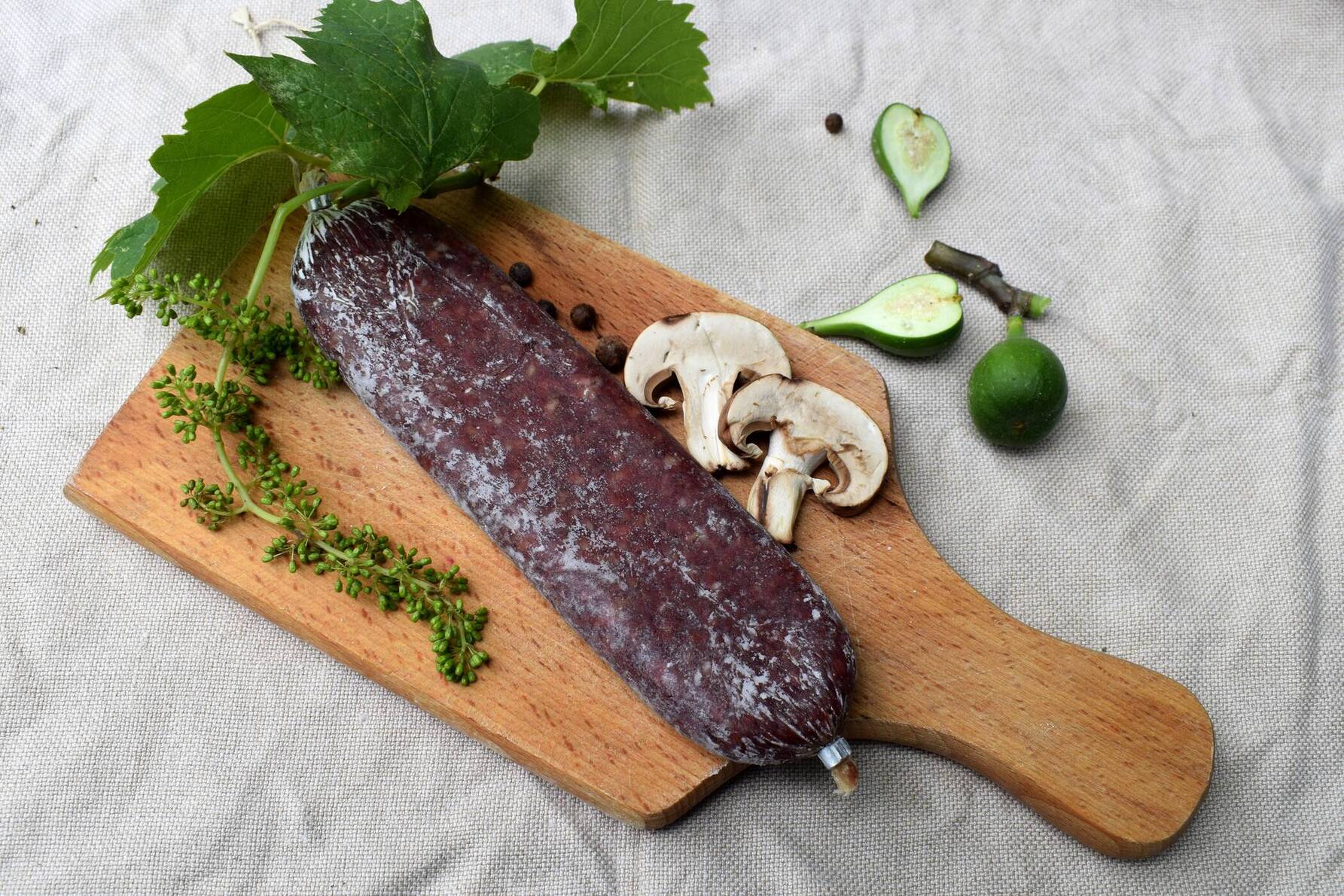
Ingredients
- 9 lbs pork
- 9 lbs veal
- 1 1/3 teaspoon black pepper
- ¾ cup salt
- One teaspoon cumin
- Dried beef intestines
- 2 cups of carbonated water
Instructions
- Clean the meat, wash, and dry it, cut them into pieces before grinding them twice into the meat grinder.
- Add spices and mix well while gradually adding the carbonated water.
- Let the mixture rest in the fridge for 24 days.
- The next day, take it out of the refrigerator, knead the meat mix and pour the second cup of carbonated water.
- Place the mix again in the refrigerator and allow it to sit for 24 hours.
- The next day, knead the mixture again and stuff the mix into the intestines. Poke holes in the middle to let out as much air as possible.
- Keep the lukanka in a cool place for three days. Thereafter, for five days, roll the lukanka using a rolling pin.
Lukanka is a popular Bulgarian spicy salami which is a distinctive Bulgarian cuisine. Although its flavour resembles sujuk, Lukanka is stronger in flavour. It is semi-dried with a flattened cylindrical shape. It has a deep brownish-red interior with skin covered in white fungus. Moreover, the mix of different pieces of meat and fat offers a grainy texture to this salami.
What’s Interesting About Lukanka?
Conventionally, lukanka salami is made from beef, spices, and pork. They are minced together and stuffed within a casing made of dried cow’s intestine. Once the stuffing is done, the salami is hung to dry for around 40-50 days in a ventilated location. During this process, the salami is pressed to get that flattened shape. Lukanka is generally finely sliced and served raw as a starter or appetizer.
The taste of lukanka varies on the characteristics of the region it is made and the impact of the microflora on the geographical environment. There are various regions in Bulgaria that are known for the production of lukanka. Generally, salami is produced in the central regions, including Karlovo, Panagyurishte, and Smyadovo.
Other Bulgarian Salamis To Try
Following are some other Bulgarian Salami, which is equally popular and delicious as Lukanka:
Kayserovan vrat Trakiya
It is raw cured meat that has been made in Bulgaria for over 30 tears from fresh pork collars. The delicacy is flat, a shape that is obtained during the curing and drying phase. The meat is pressed repeatedly to get a flat shape. Moreover, its unique brownish-red crush is derived from the Kaiser mixture with which the meat is coated. The mixture includes fenugreek, red peppers, hemp yarn, twine, white wine or garlic. When you slice the Kayserovan vrat Trakiya, you’ll see vividly red meat with a thin layer of salmon-pink fat.
Strandzhanski Dyado
Strandzhanski Dyado is a meat delicacy that is a staple of mountainous Strandzha, Bulgaria. The dried and raw salami is generally made by mixing pork tripe, and ground pork with seasonings including paprika, chubritsa, black pepper, salt, and dried hot peppers. The meat mixture is stuffed within a pig stomach and sewn or tied tightly, allowing it to dry for around ten days. Traditionally, the meat surface is covered with ashes to boost the drying process. Thereafter, the meat is left to dry and mature in a well-ventilated place for around 40 to 60 days to develop its unique flavour.
Role Trapezitsa
Role Trapezitsa is a traditional raw dry-cured meat delicacy that is made from chilled or frozen pork collars. The name of this salamis is derived from Trapezitsa, a popular hill located in Veliko Tarnovo. Earlier, this was the capital of Bulgaria. According to the traditional recipe, the preparation process includes mixing pork collar with salt and natural seasonings like white or black pepper and garlic. Thereafter, the meat is stuffed into the natural casing and left to dry.
Banski Starets
Banski Starets means an old man from Bansko and is a dry-cured pork salami. The meat specialty is made with a combination of seasoned minced pork that is stuffed into the pork intestines and air-dried for around six months prior to consumption. Traditionally, the seasoning includes black pepper, salt, and cumin. Salami has a rich, salty flavour, and they are popularly found in the Bansko region. It is generally served as a dry appetizer and goes well with rakia or Bulgarian wine.
File Elena
It is dried raw meat, which is made from frozen or chilled pork tenderloin. Its name belongs to the city of Elena, located in northern Bulgaria. During the era when Bulgaria was under the Ottoman Empire, religious constraints made it impossible to sell pork products. The fillets are dried and salted in a controlled environment ideal for natural microflora to ensure the meat gets its typical fragrance.
Gornooryahovski Sudzhuk
Traditionally made in Gorna Oryahovitsa, Gurnoor Yahovski Sudzhuk dates back to 1538. The sausages were originally known as smarlama and Sara. But later in the 1940s, these were renamed Gornooryahovski Sudzhuk, where they became extremely popular due to their unique flavour.
Elenski But
It is traditional dry-cured meat that hails from the Elena town of Bulgaria and the surrounding region. It is made from pork leg that is salted and cured over salt and bacon on a wooden cask. After the curing is finished, the pork leg is properly rinsed in boiling water sauerkraut juice. Thereafter it is air-dried for at least six months.
Salami is a popular delicacy in Bulgarian culture, and you will find a wide variety of it. Lukanka is a very distinctive variety of Bulgarian salami and has its popularity out of the country as well. You can make your own Lukanka salami with our recipe above. Furthermore, we have also mentioned some of the interesting substitutes for this sausage. The core process of each of these alternatives is the same, with a slight difference. But the flavor you get from each salami will be unique to the culture of different regions of Bulgaria.













